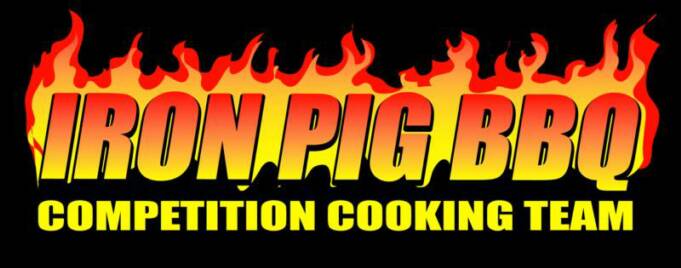


The way you should be cooking your steaks, roasts, chops, etc...
It's the way Iron Pig BBQ does it.
Bucking traditional cooking thoughts, I pioneered the “Reverse Sear” (or The Finney Method) method of cooking back in the early 2001.
Traditional thinking has it that you sear a steak or roast (to seal in juices) and then reduce temps to finish cooking but doing research I found the opposite to be true. Searing the meat damages the cell walls and releases moisture, but roasting alone didn’t add a lot of flavor like the searing did.
What about searing after the meat was cooked? “That’s just crazy talk”… but exactly what he found that you need to do. For more than 3 yrs I tried to get fellow cooks to try his method of cooking steaks and roasts with little success until…
Unbeknownst to them that I was already doing the method, “Cooks Illustrated” and “America’s Test Kitchen” proved out “The Method” in 2007 using an oven and then a cast iron skillet. And, Alton Brown used basically the same method for cooking rib roasts in the oven. Now ceramic grill users are finding the benefit of the “Reverse Sear” because it is easier (and faster) to raise the temp in a ceramic cooker than lower it.
In 2007 a Florida newspaper touted the advantages of using “The Finney Method” in an article called “To Sear, or not to Sear”.
Now the "Reverse Sear" is everywhere, with lots of thanks to my friends Larry Wolfe and Steve Graves (ask-a-butcher) who both post on cooking sites all over the internet and promoted the method. And to all the members on the Primo Grill forum who starting listening when everyone else was still saying, "Who in their right mind would sear meat after it's cooked".
"REVERSE SEAR" (the FINNEY Method)
1. Thaw meat (if frozen). If meat is refrigerated, remove from fridge when you go out to light grill.
2. Pre-heat your grill to 200* and let stabilize. You can go as high as 250*. Higher really, but the lower the better. Also, a lower cooking temp will get you a smaller rise in internal temp from carryover heat.
3. Insert meat probe into meat and place on the grill. Go as indirect as you can with your cooker. You want gentle heat. A ceramic cooker is better for that than an oven. (because an oven cycles on and off to keep temps within a range)
4. When the internal temp of the meat reaches 5* below your target temp (if cooking at 200-230*) remove steak to a plate and loosely tent with foil. (as much as 10* under your target if cooking at 250*) Leave probe in meat.
5. Open vents on grill and raise temp as high as you feel comfortable. The higher the better to keep a low internal finish temperature. (I know this sounds backwards or reverse even, but trust me)
6. When the internal temp of your meat has dropped 2 - 5* from it's carryover temp high, remove the probe and place meat directly over, and as close to the coals as your cooking rack allows. (on a Primo with a full load of charcoal you should be within a few inches, max) With extremely high heat and close proximity to the coals you should have a good sear in seconds. (remember, at this point you're only searing... the meat is cooked, so don't leave it on there longer than you have to)
the "Reverse Sear"
Dummies Guide to the "Reverse Sear"
Listen to Iron Pig BBQ "Pitmaster" Chris Finney on the BBQ Central Radio interview on the "Reverse Sear" (segment two of the show) from March 25, 2008.
You'll have to scroll down to the show date. (sorry)
BBQ Central Radio Steak Roundtable
December 1, 2010
Iron PIg BBQ "Pitmaster" Chris Finney talks steaks and how to cook them.

Reference info for the "Reverse Sear"

